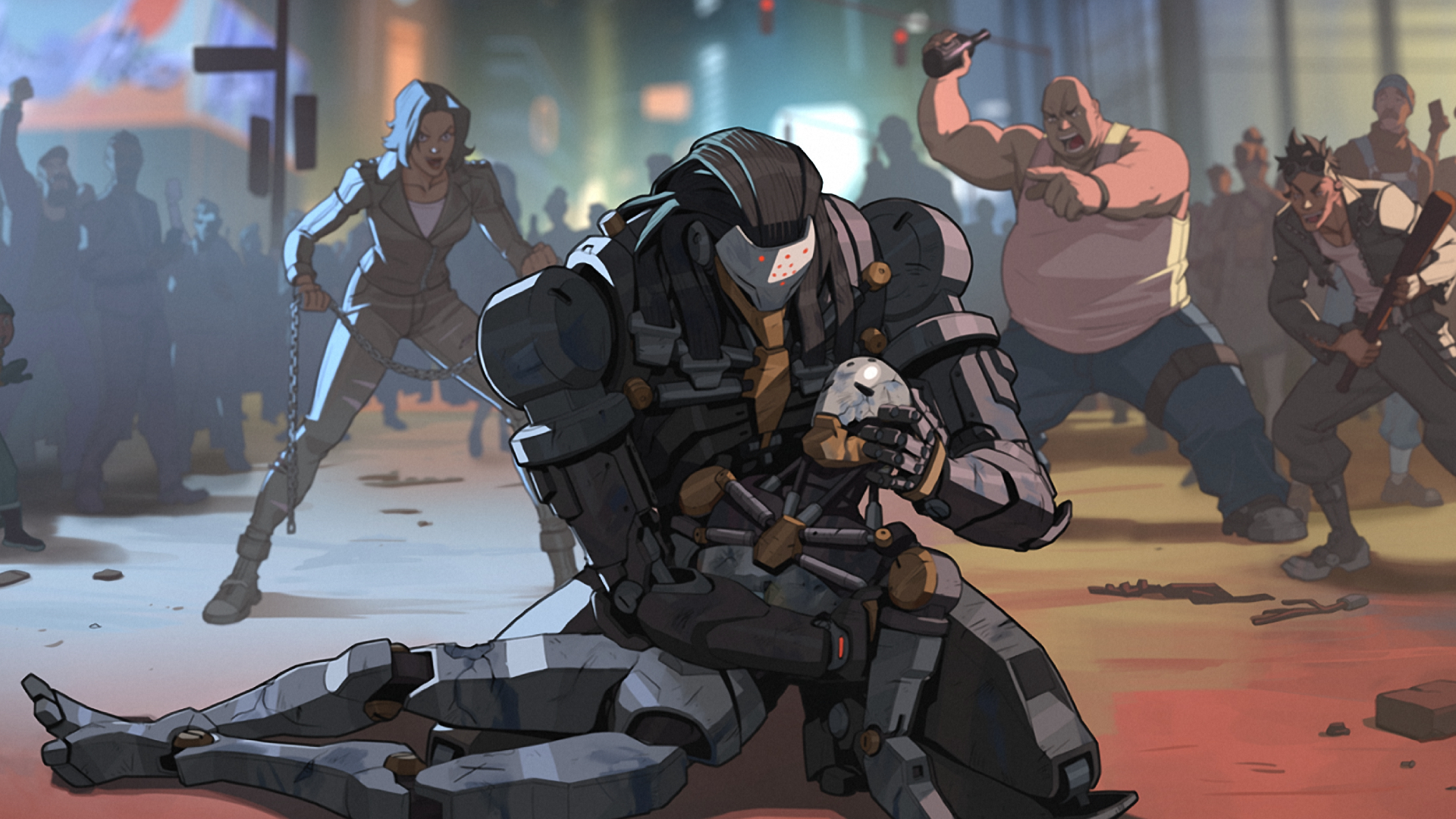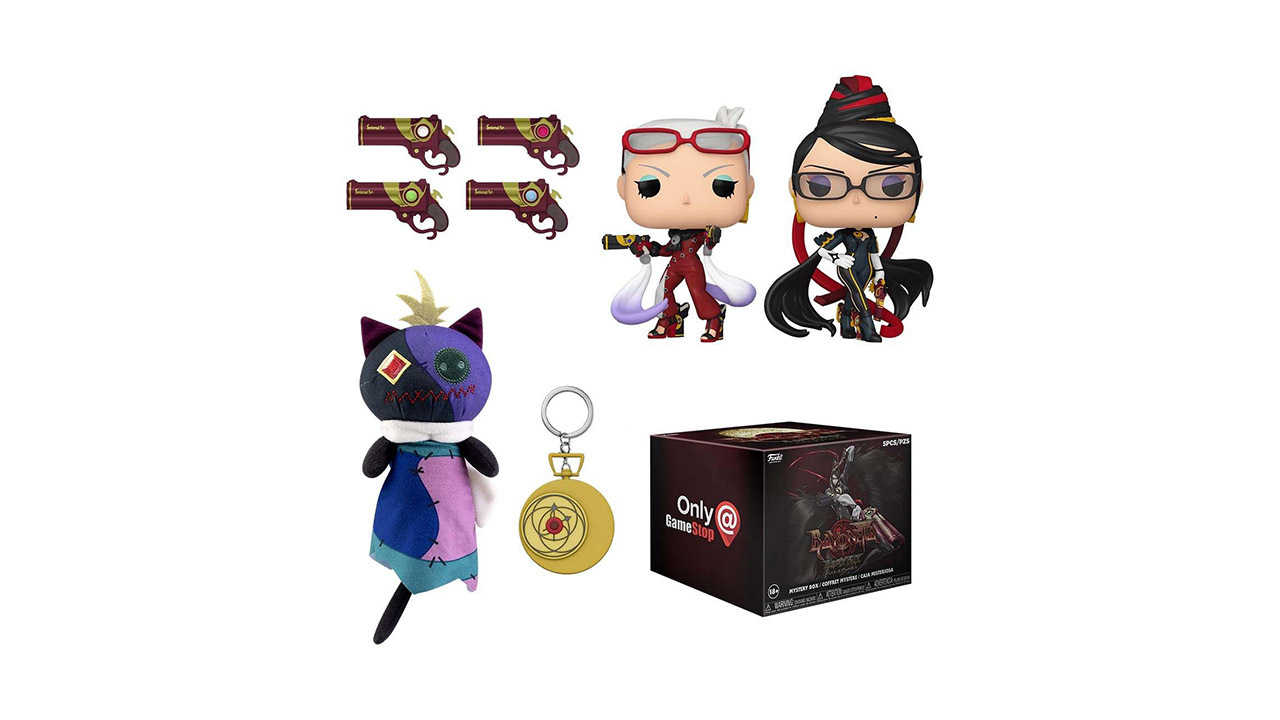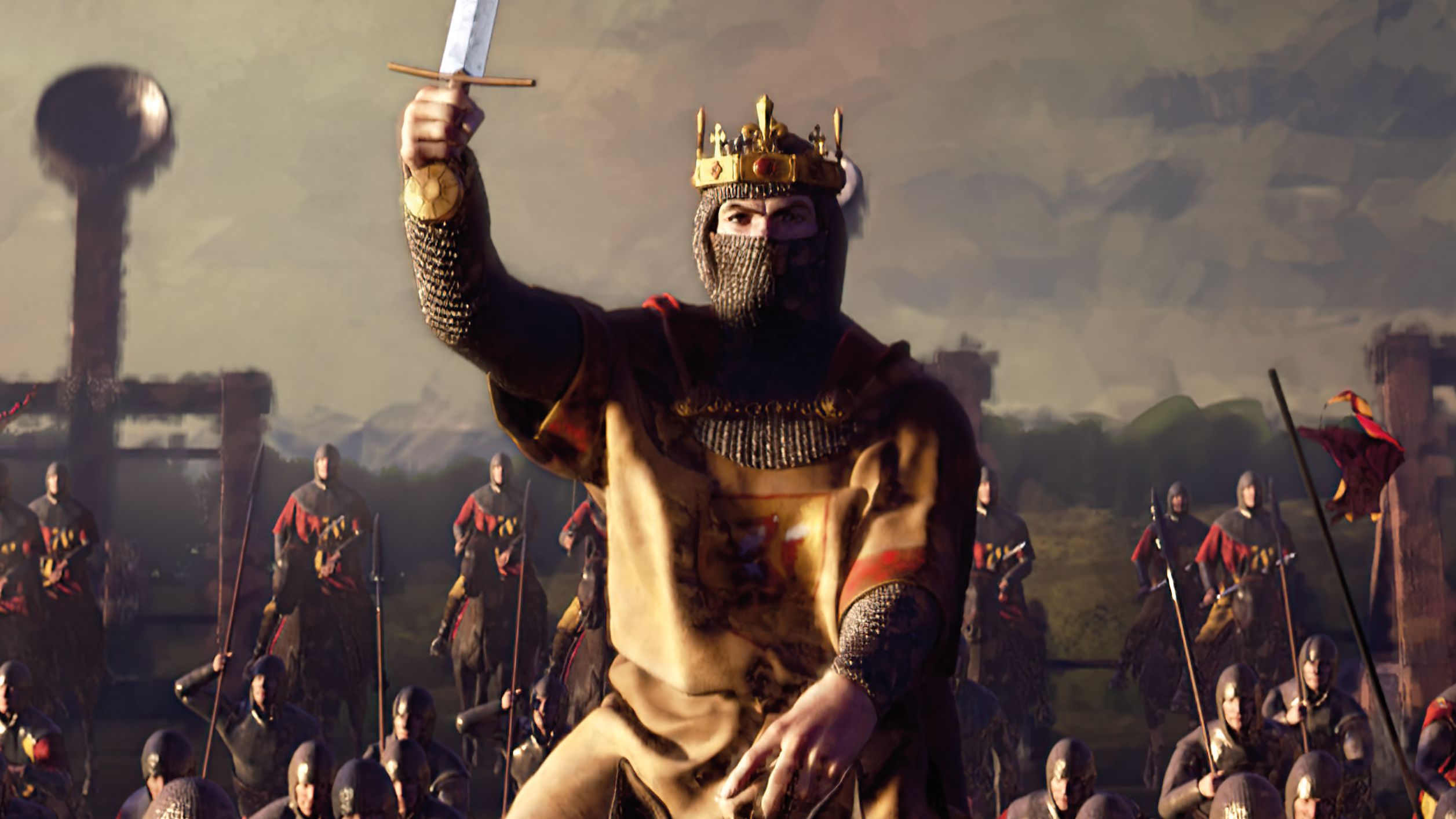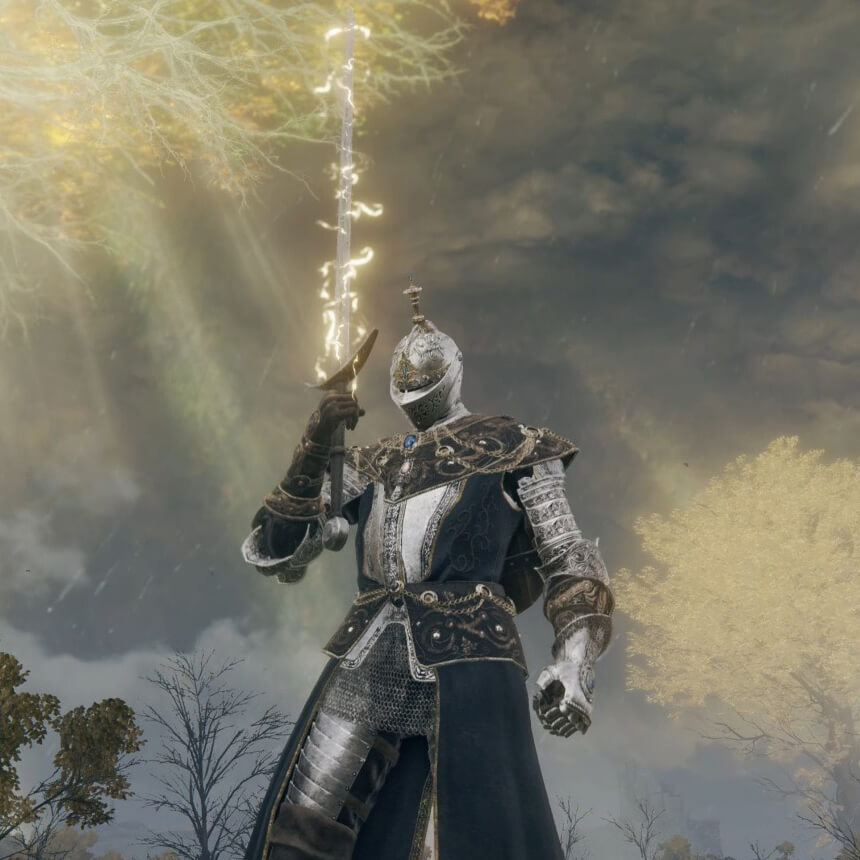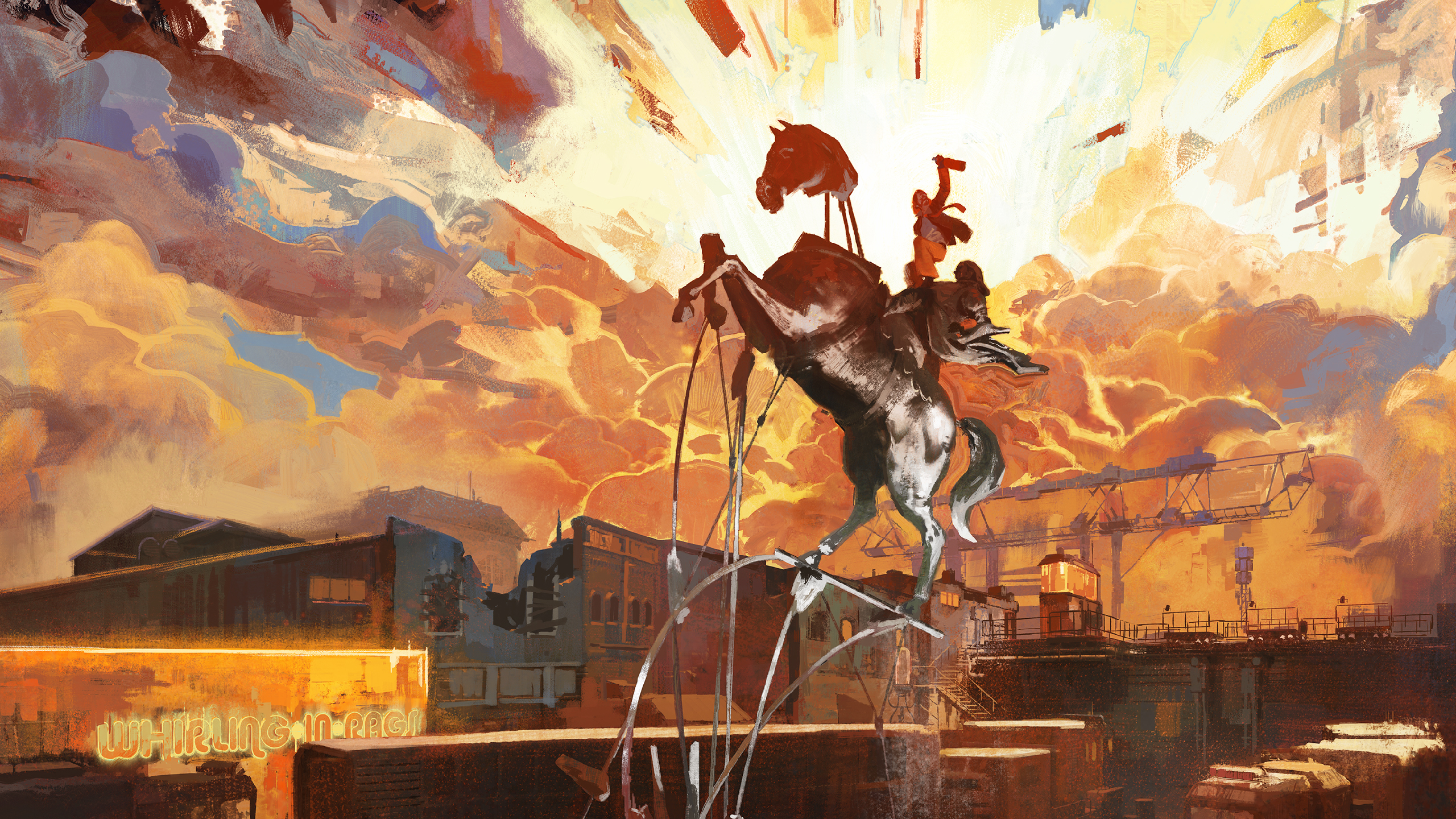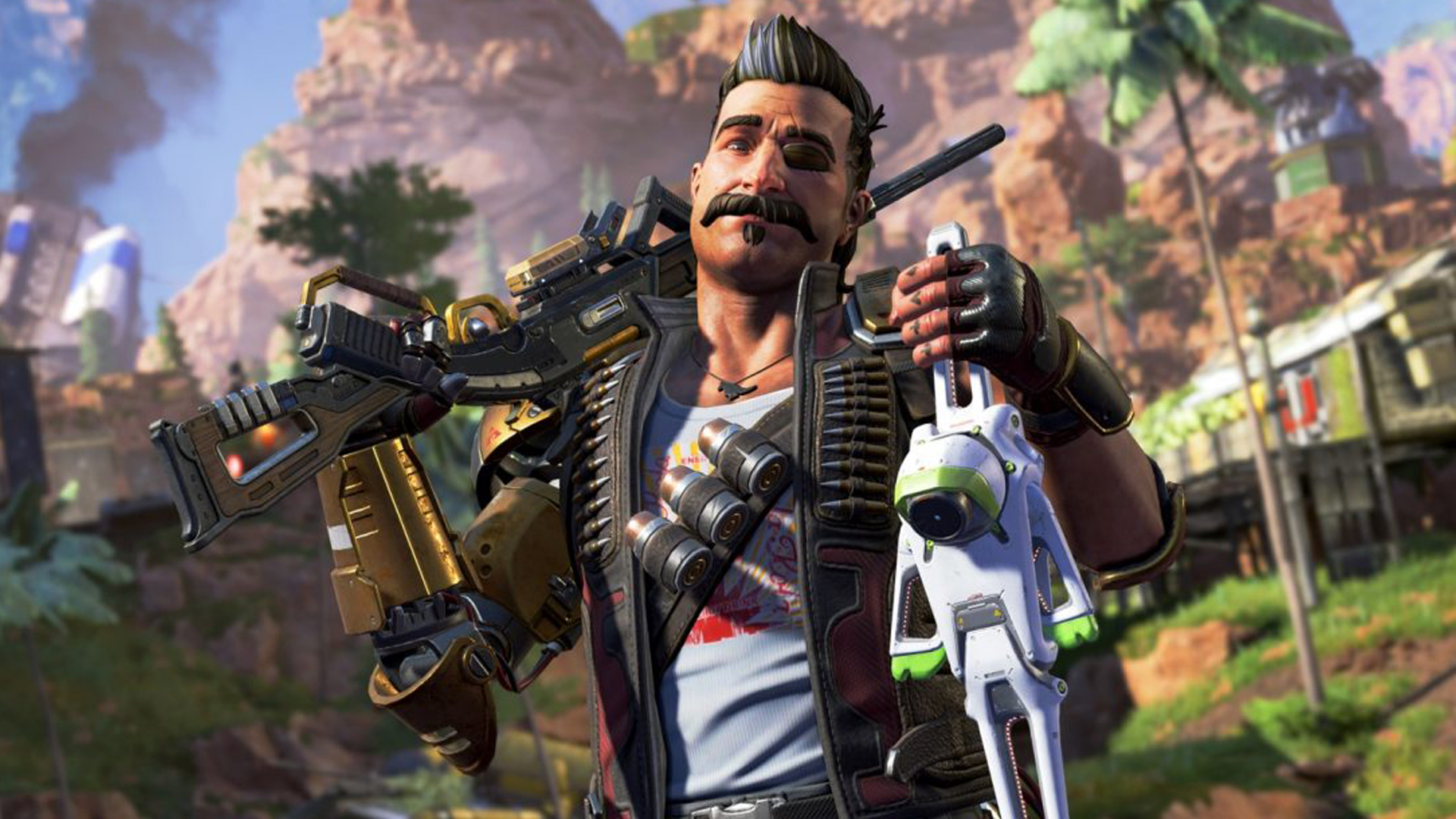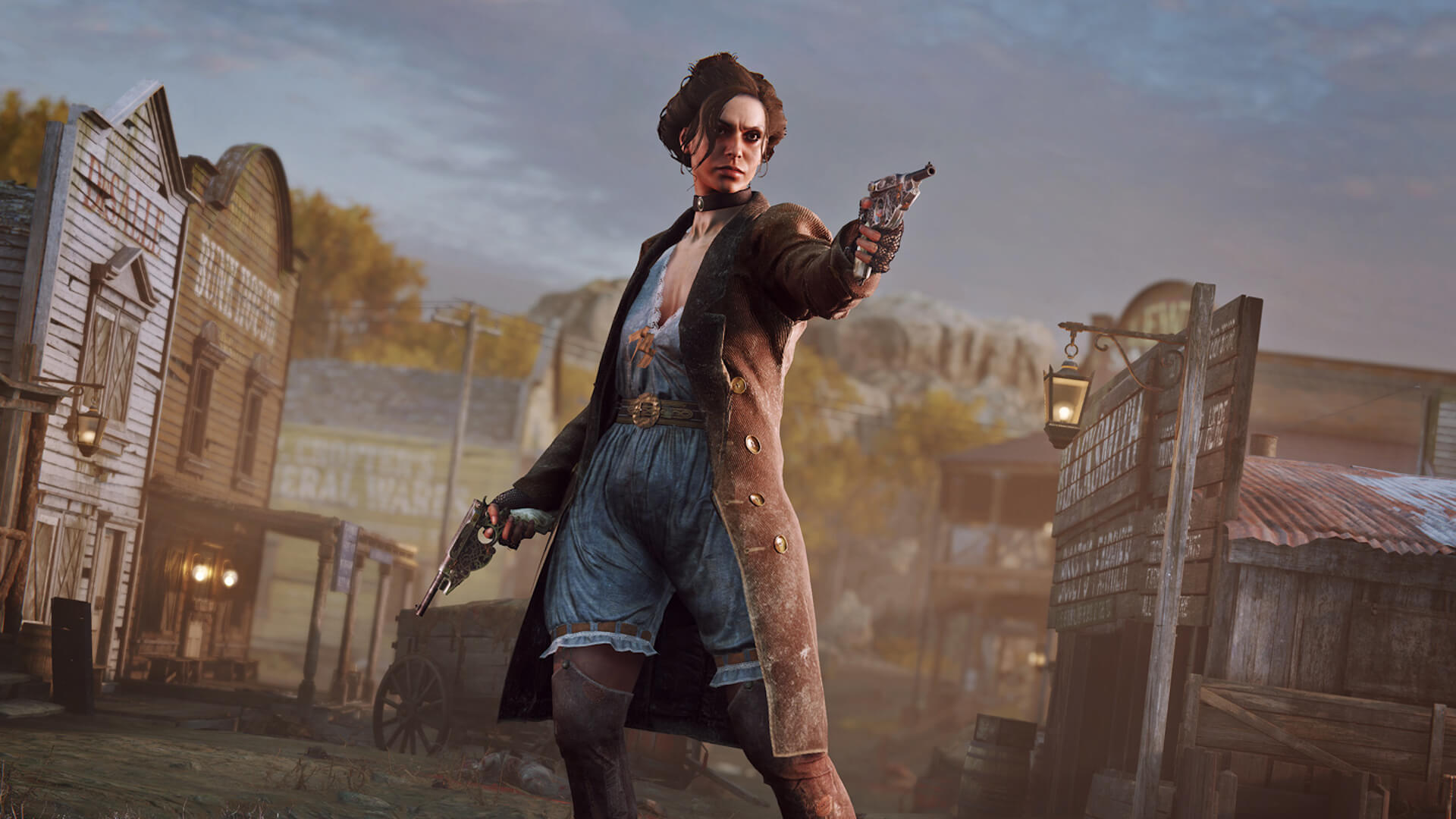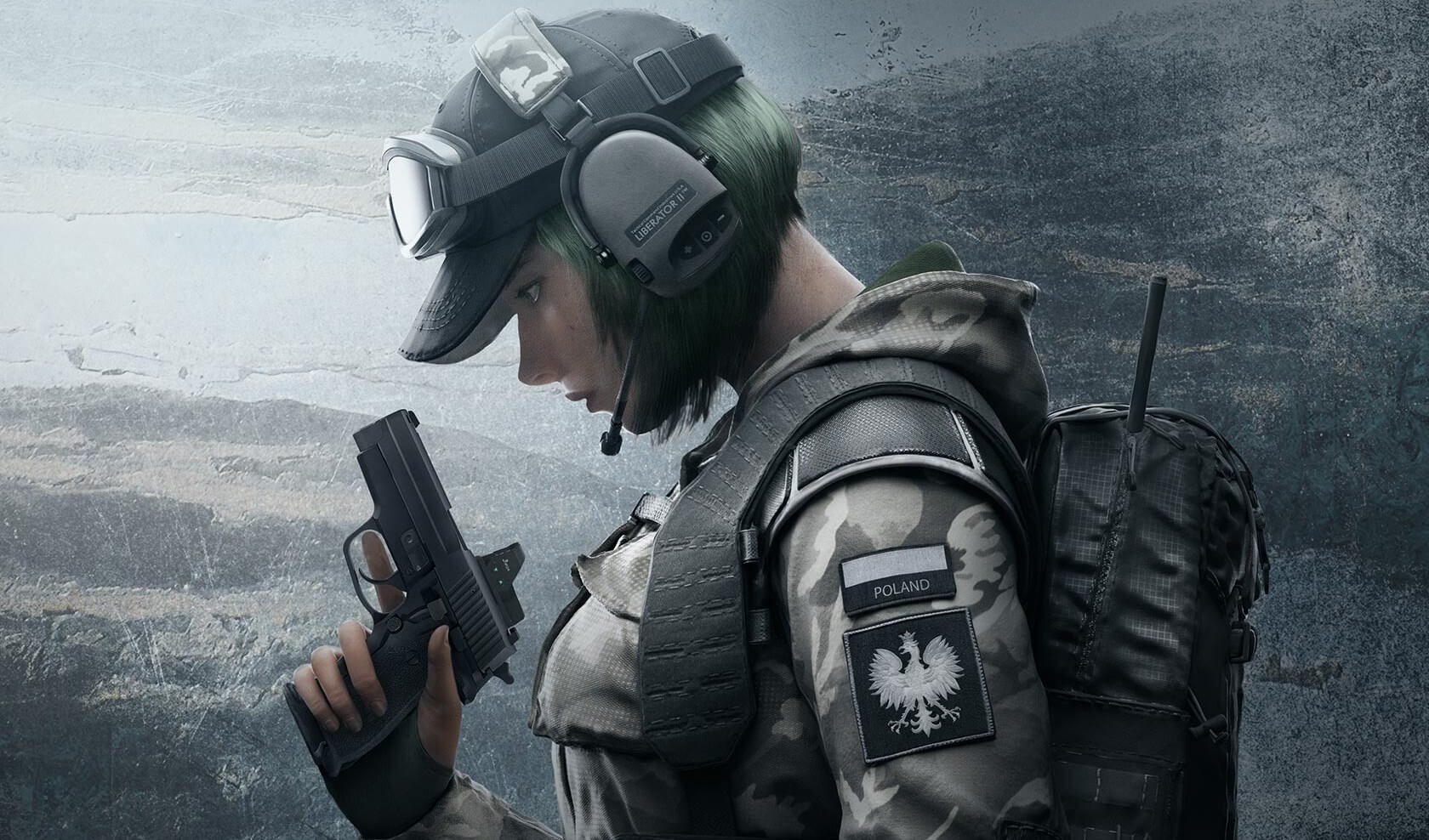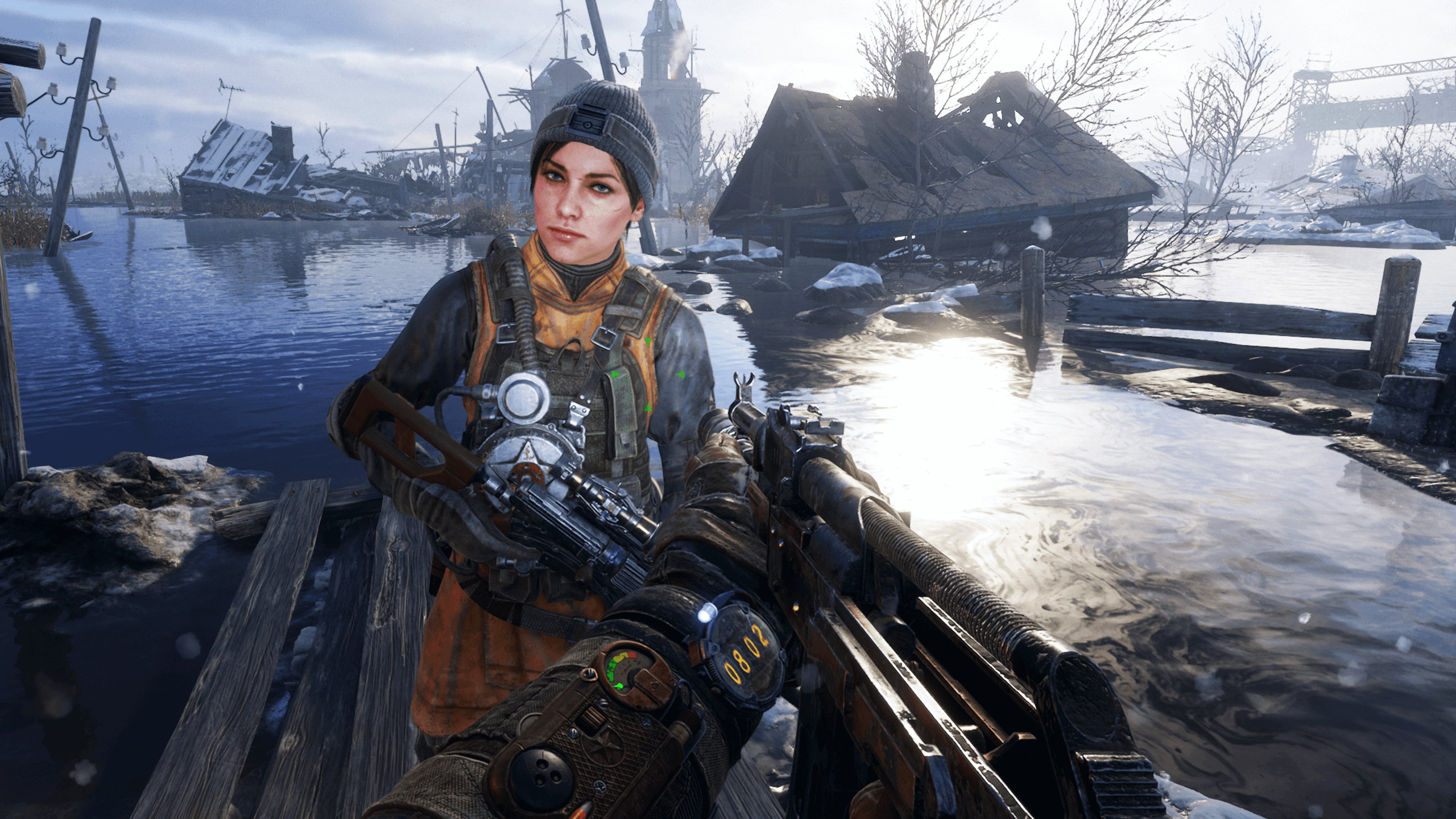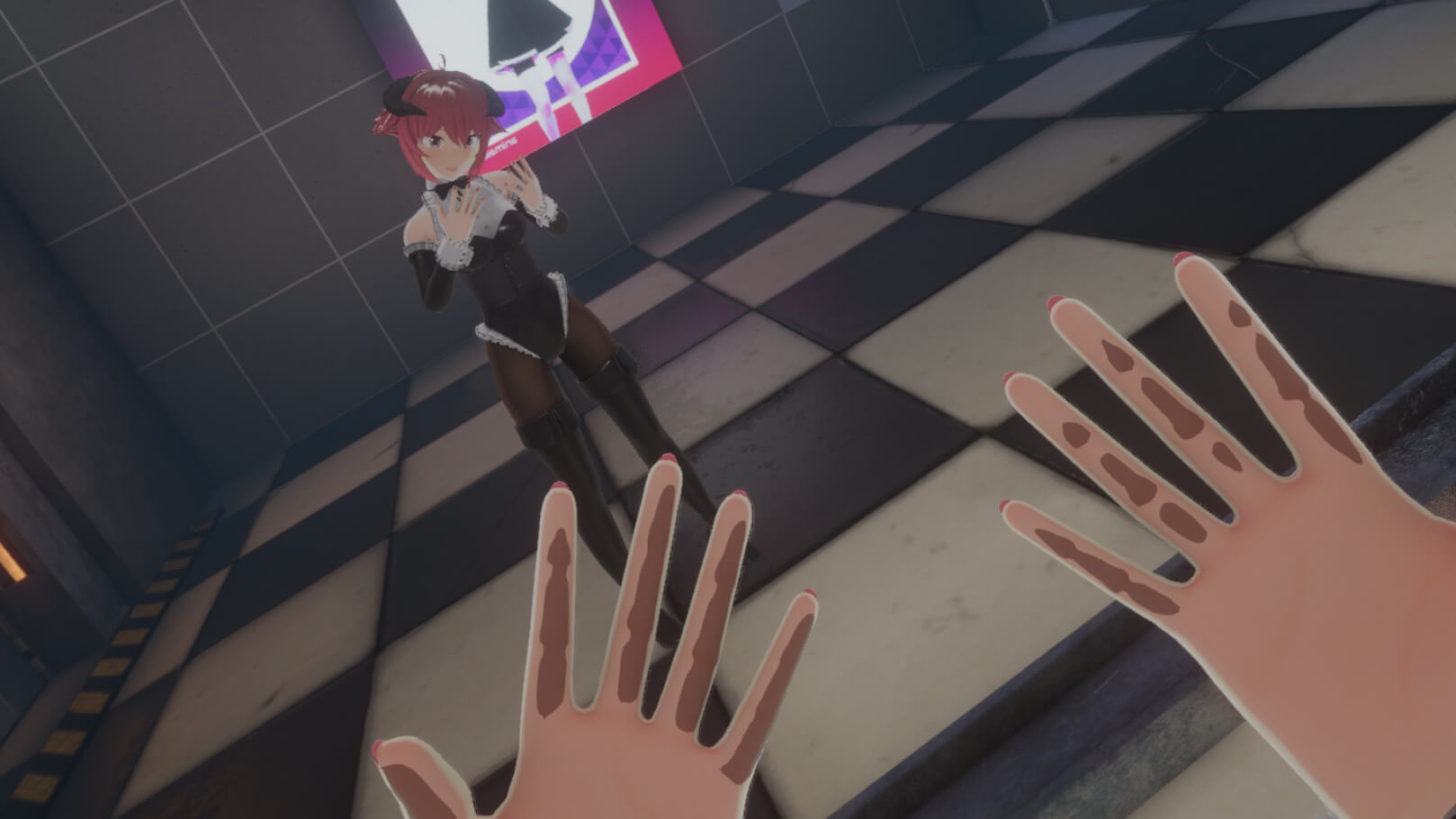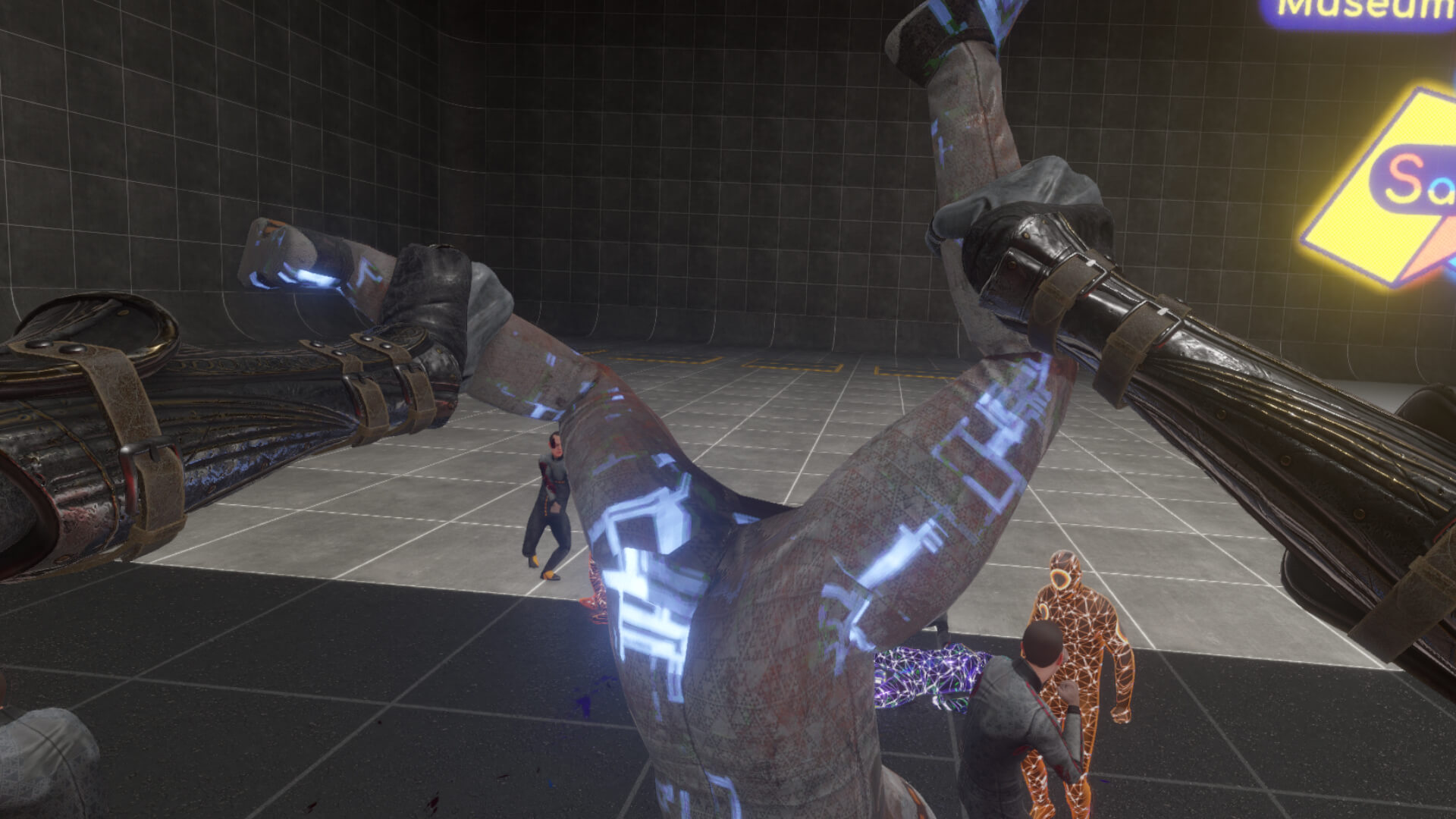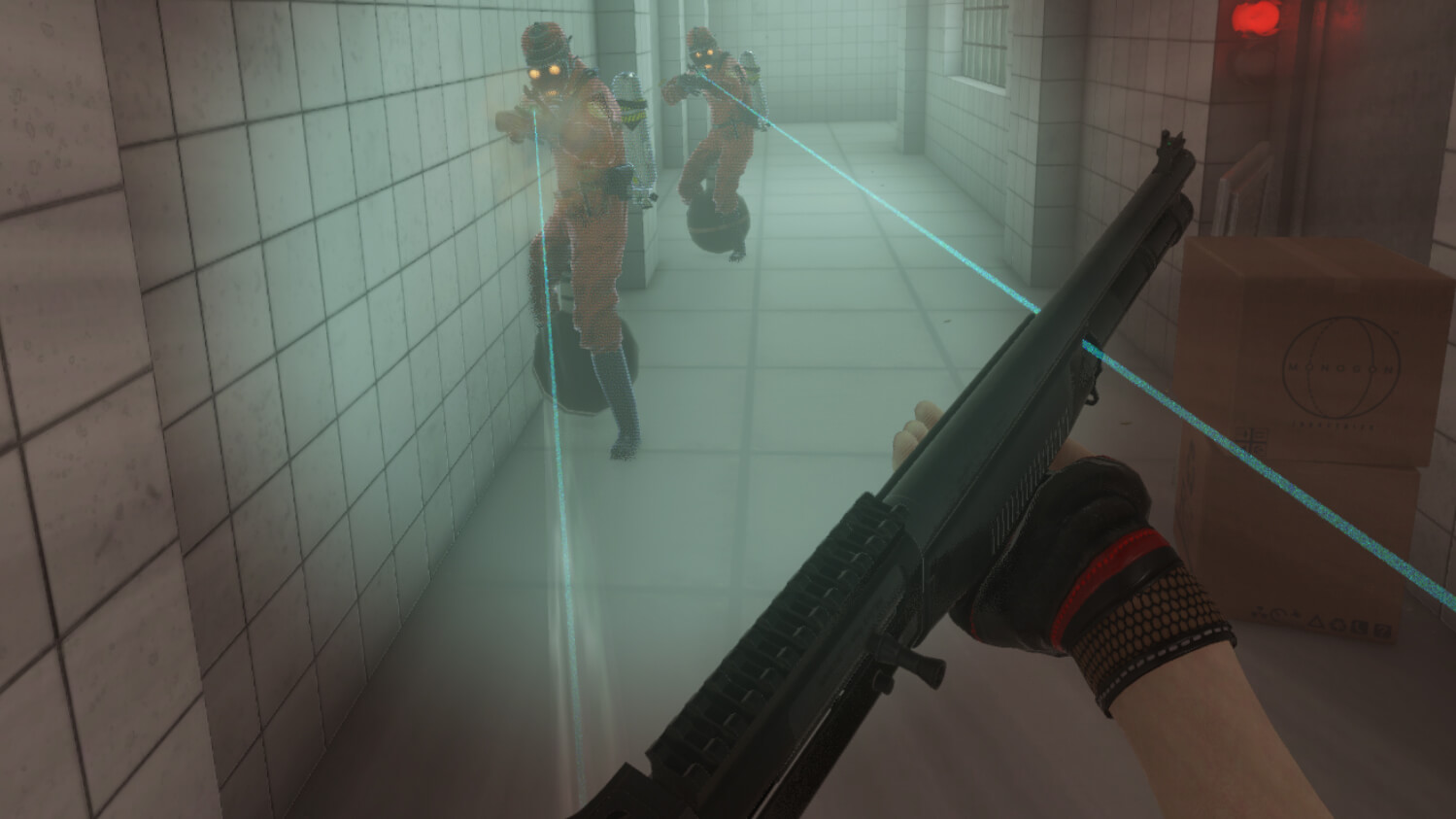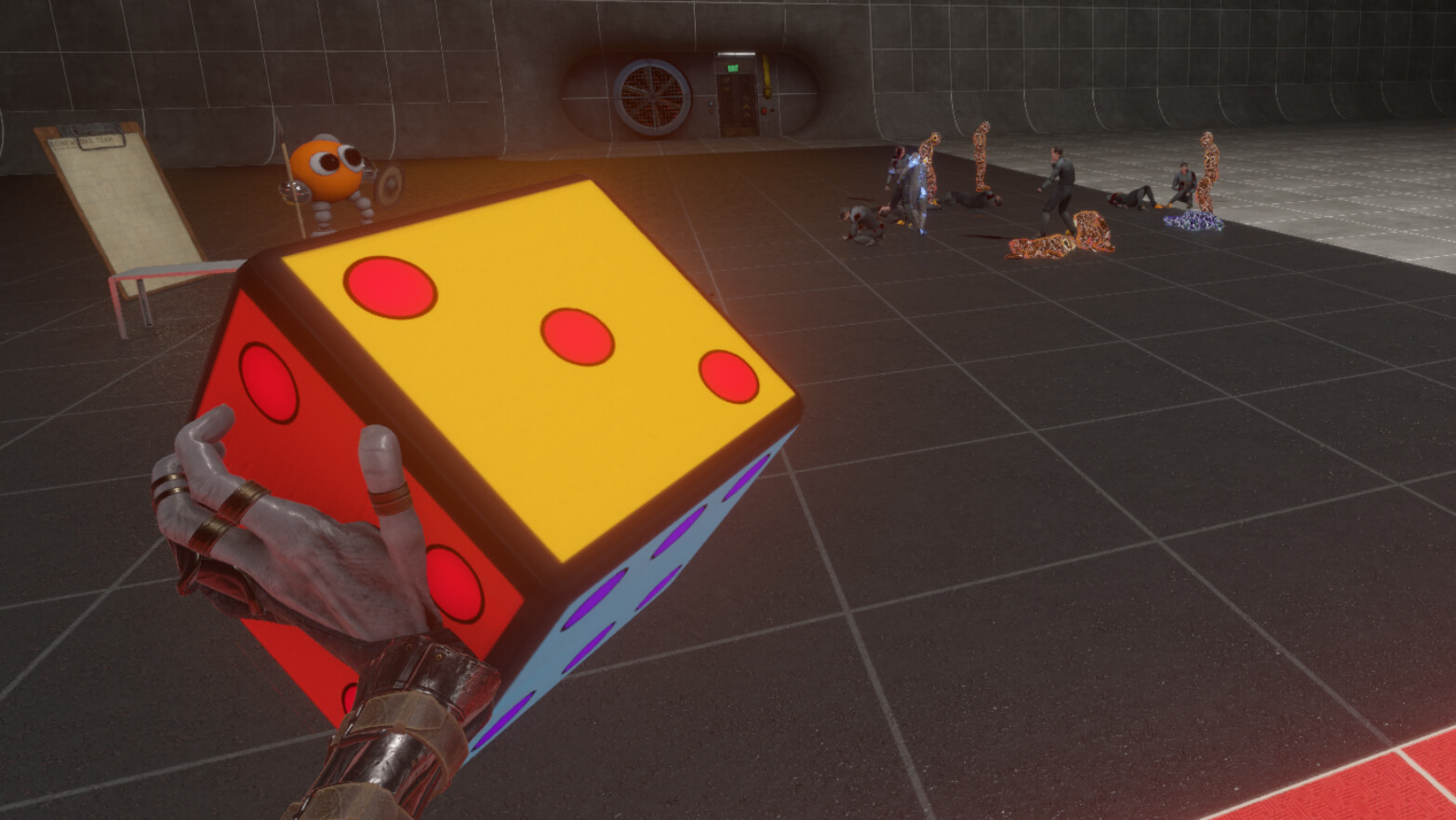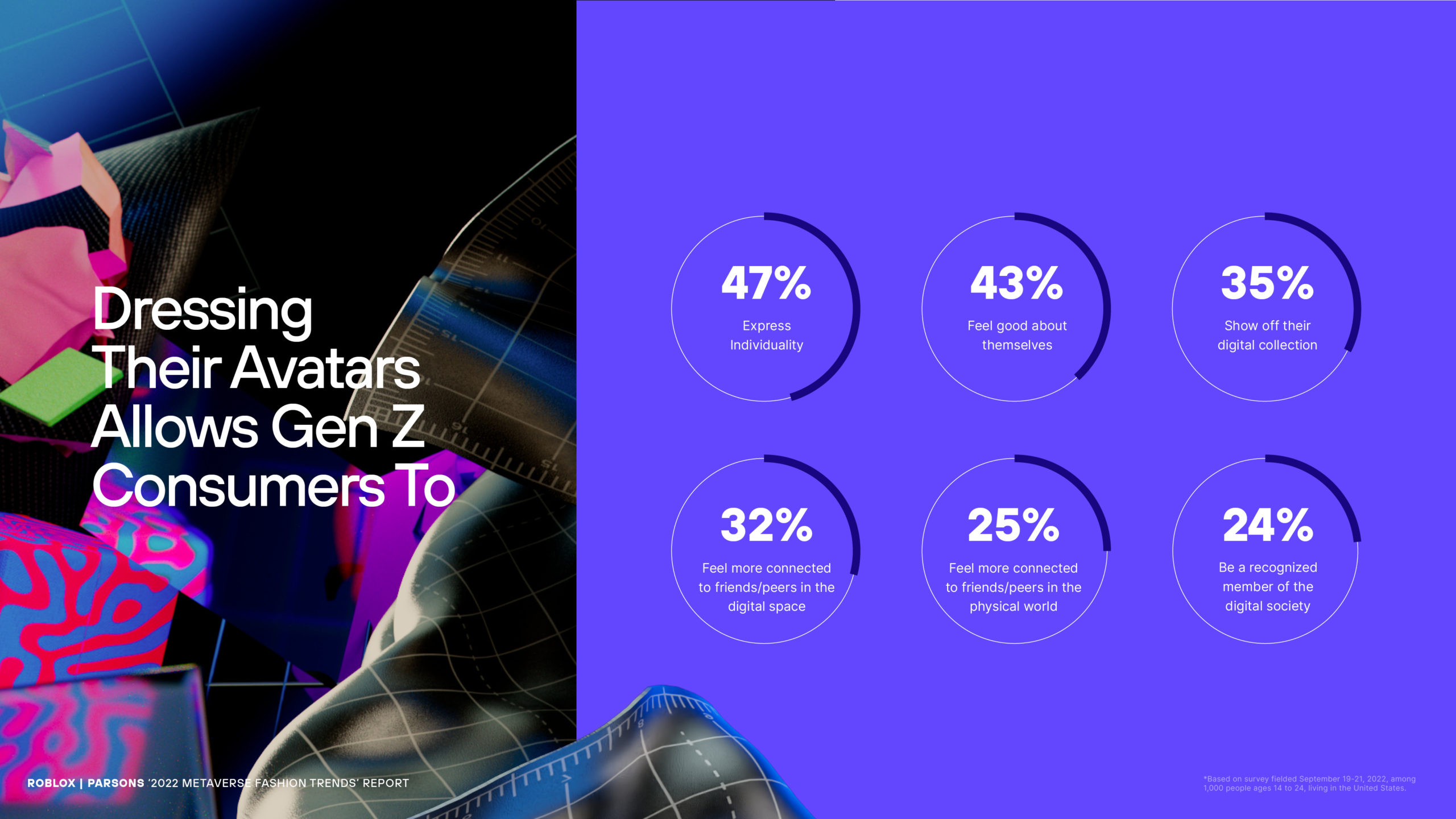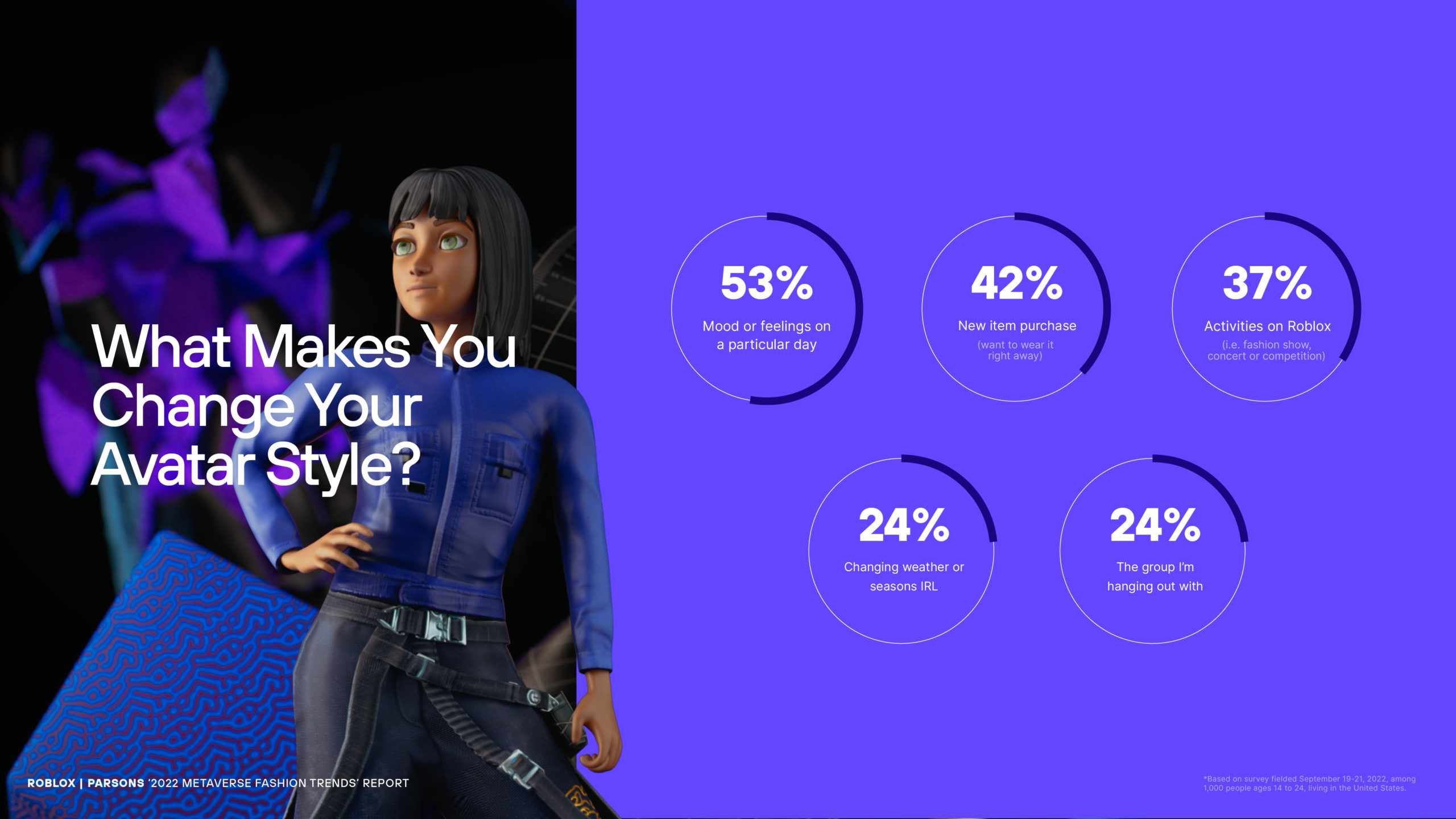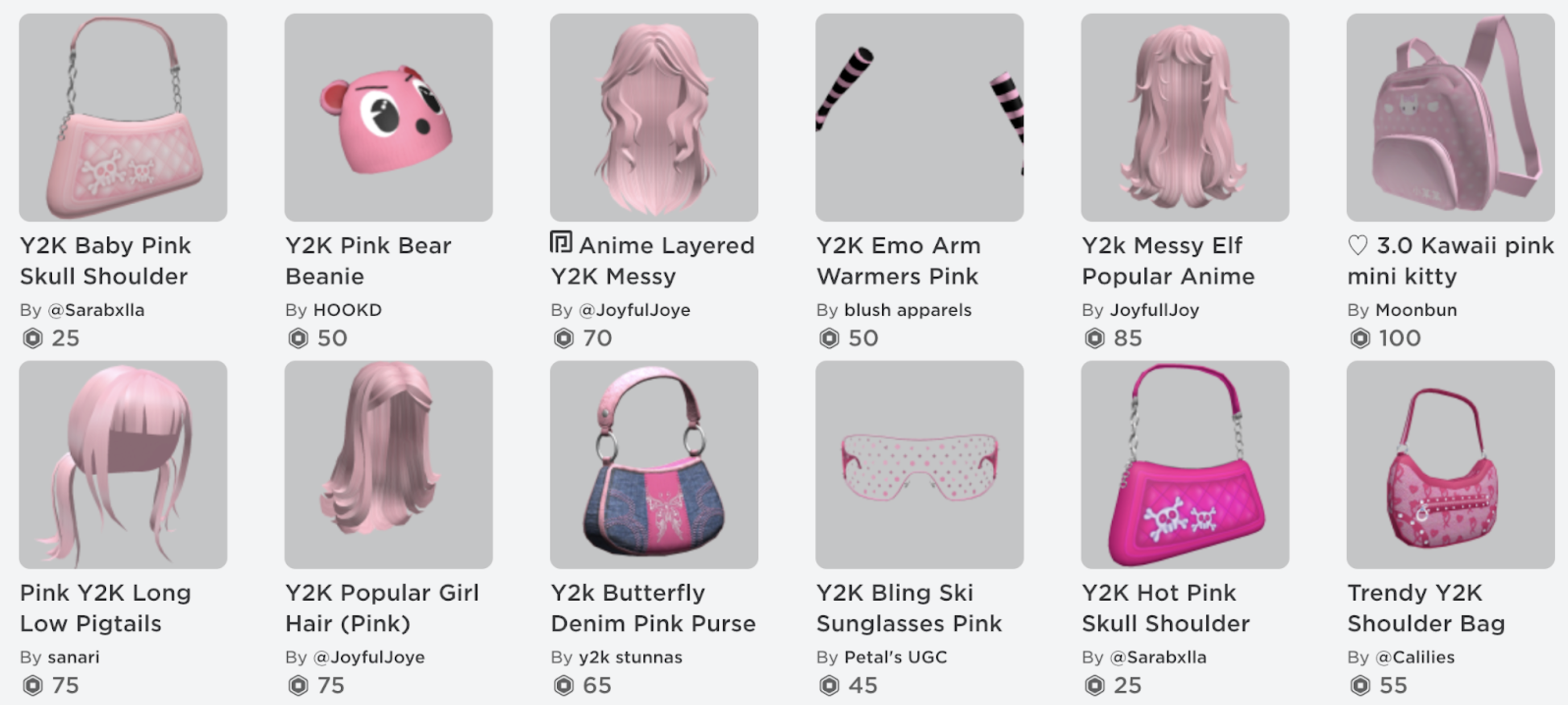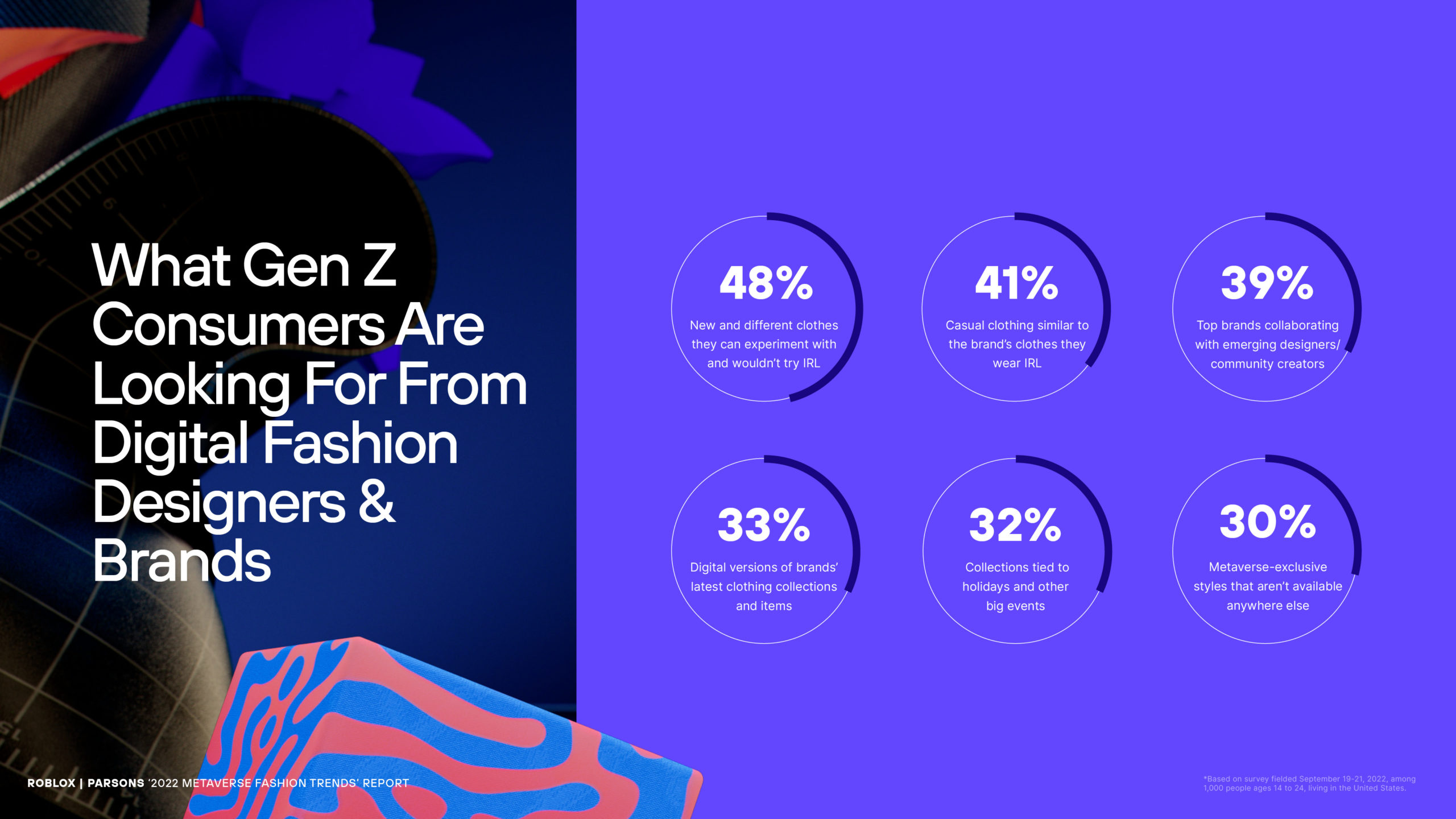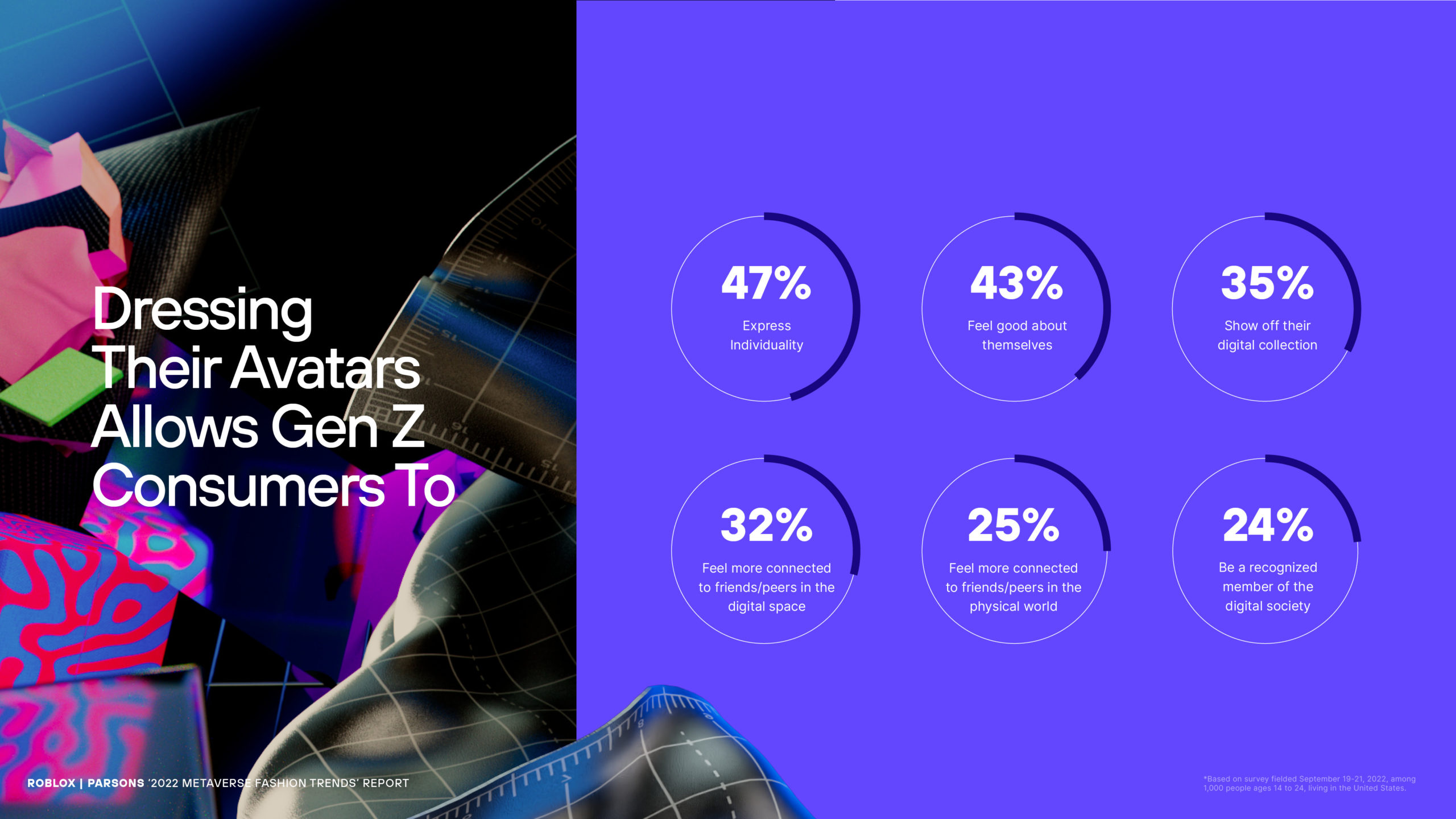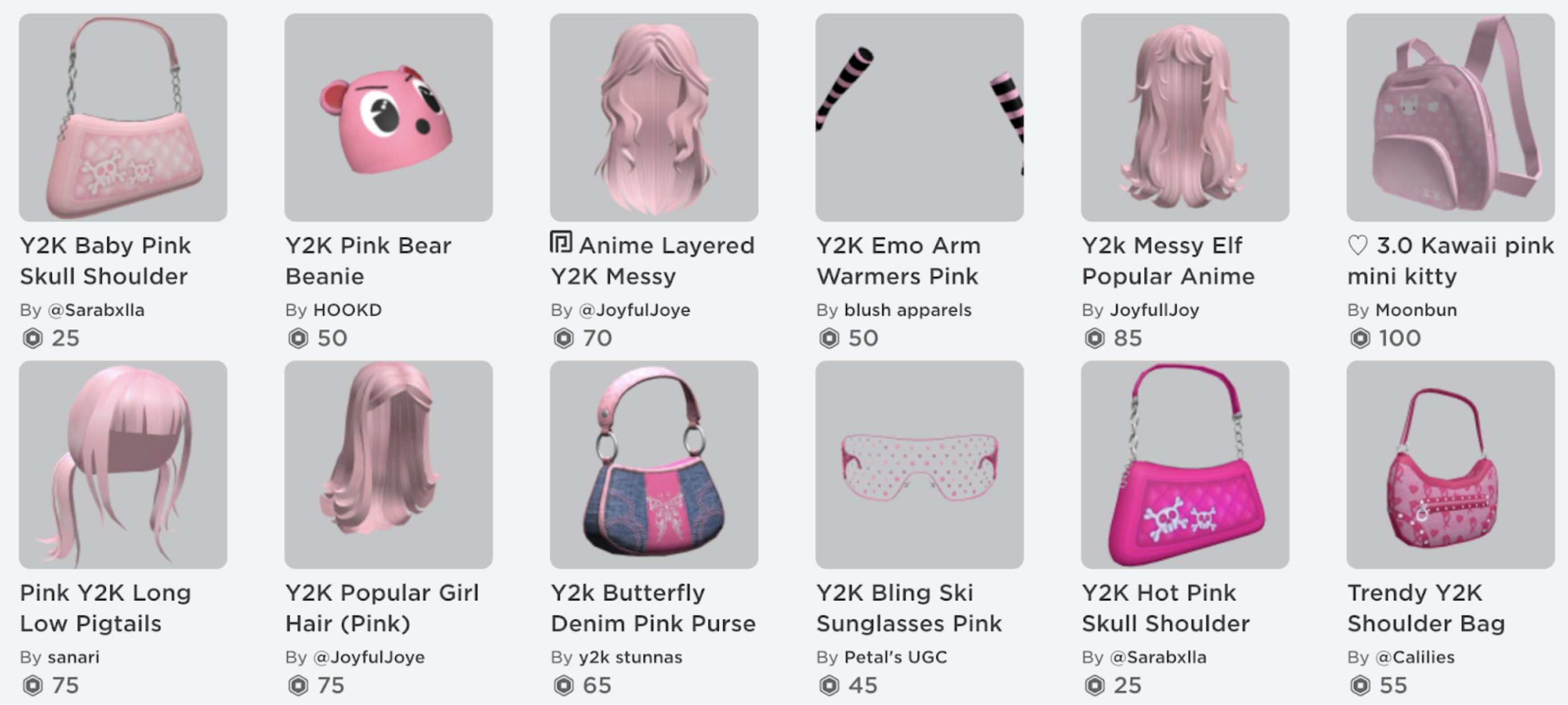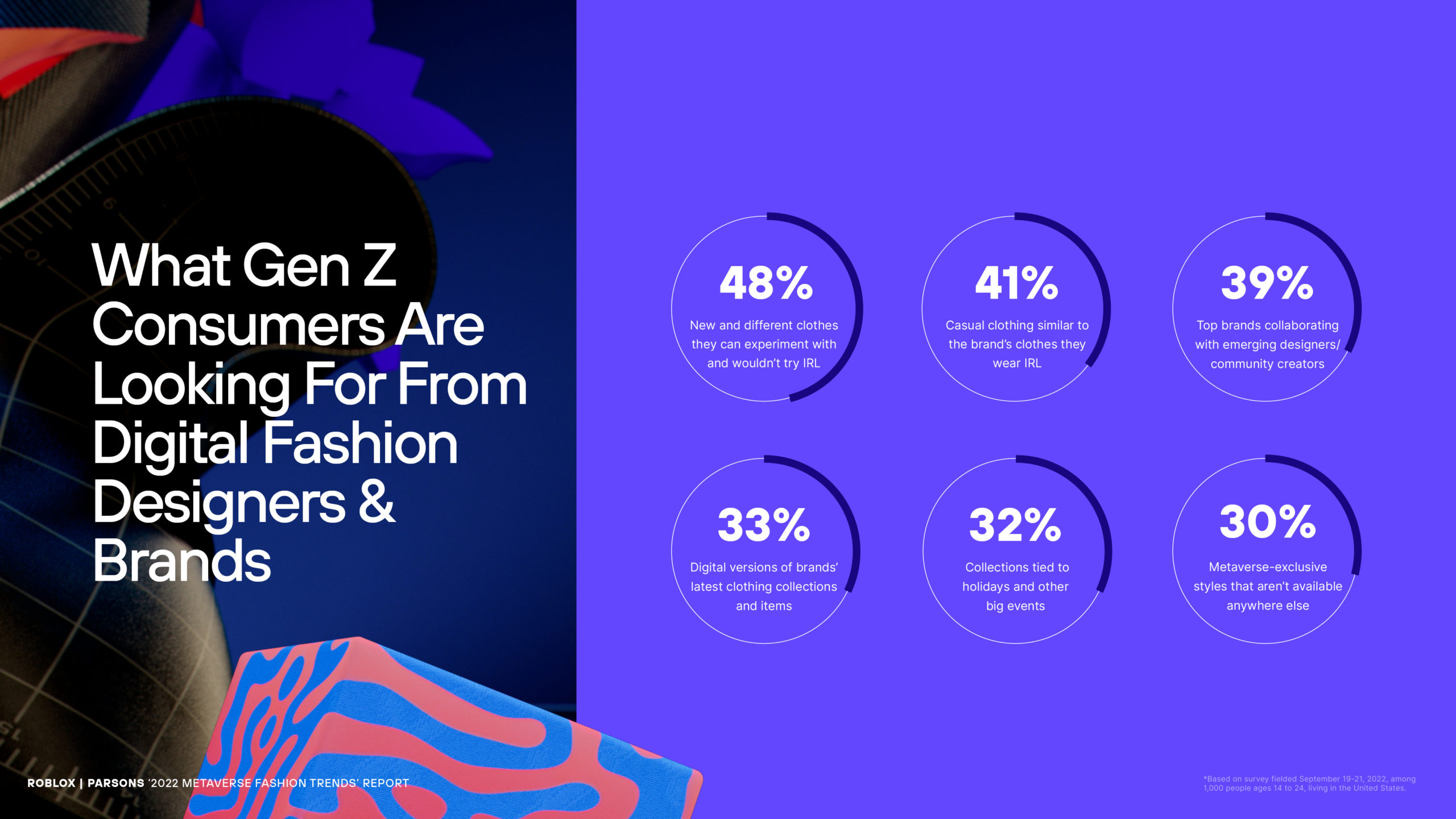Take an In-Depth Look At Gen Z’s Avatar Style Preferences
Missed our virtual panel “What’s Next in Metaverse Fashion?” Stay tuned for the recording link coming soon!
Long before the vast potential of digital fashion captured the attention of media and brands, our community members were designing, sharing, and wearing their own avatar fashion creations. For over a decade they’ve been redefining digital identity and their personal style, but in the past few years we’ve seen incredible leaps in the evolution of self-expression on our platform.
Iconic fashion brands have established presences here on Roblox by partnering with our creator community, and the rollout of Layered Clothing – our new technology powering hyper-realistic 3D clothing – has once again raised the bar for what our creators are able to make. As the opportunities for self-expression and personal style accelerate, we decided to take a moment to connect with our incredible community and get a deeper understanding of their experience with digital fashion. We conducted extensive research, drawing both from our own platform as well as survey responses¹ from a thousand Gen Z members who are active on Roblox and closely familiar with digital fashion.
To offer an in-depth look at the digital fashion trends we’ve been seeing, we’ve partnered with one of the world’s leading institutions for art and design education, Parsons School of Design, to launch our ‘2022 Metaverse Fashion Trends’ report. Here are the top 5 trends.
2. The Influence of Creator Communities on Fashion Is Accelerating
In 2022 alone, more than 11.5 million creators designed over 62 million virtual clothing and accessory items on Roblox. These creators dress millions of people all over the world and impact how they express themselves both in the digital and physical worlds.
To put that in context, there are at least 200 times as many creators designing clothing and accessories on Roblox as the estimated number of fashion designers creating physical collections in the United States².
In 2022, we’ve seen a large influx of global fashion and beauty brands creating digital fashion and immersive experiences for Roblox (or integrating with existing popular experiences on the platform) – including Gucci, Burberry, Carolina Herrera, Tommy Hilfiger, NARS, Alo Yoga and supermodel and entrepreneur Karlie Kloss, as well as metaverse-only fashion companies like DRESSX. Most of these brands are tapping into the vast expertise of Roblox community members who can help create beautiful digital fashion and other engaging content on the platform.
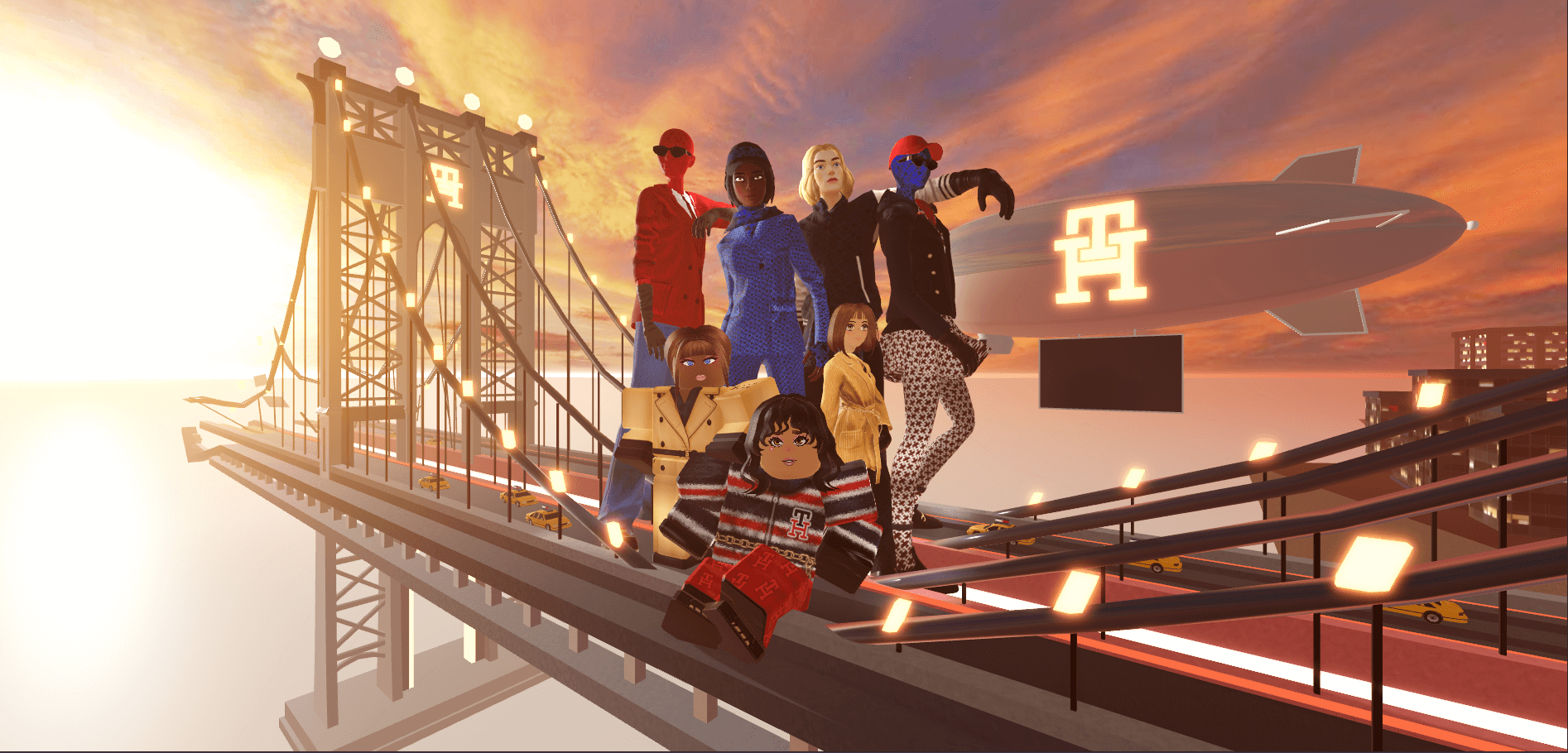
2. Self-Expression and Inclusivity in Digital Fashion Is Essential for Gen Z
The vast majority of Gen Z who are active on Roblox said in our survey that they have customized their avatars, with half of them changing their avatar’s clothing at least every week.
Just like in the physical world, people tend to connect with and react to others around them based on the way they look and dress, which can have a profound impact on their self-confidence and relationships. Dressing their avatars allows consumers to express their individuality (47%) and feel good about themselves (43%), but also to show off their digital collection and feel more connected to peers – in both the digital and physical worlds.
In fact, 2 in 5 respondents said expressing themselves with clothing and accessories in the digital world is MORE important than expressing themselves in the physical world.
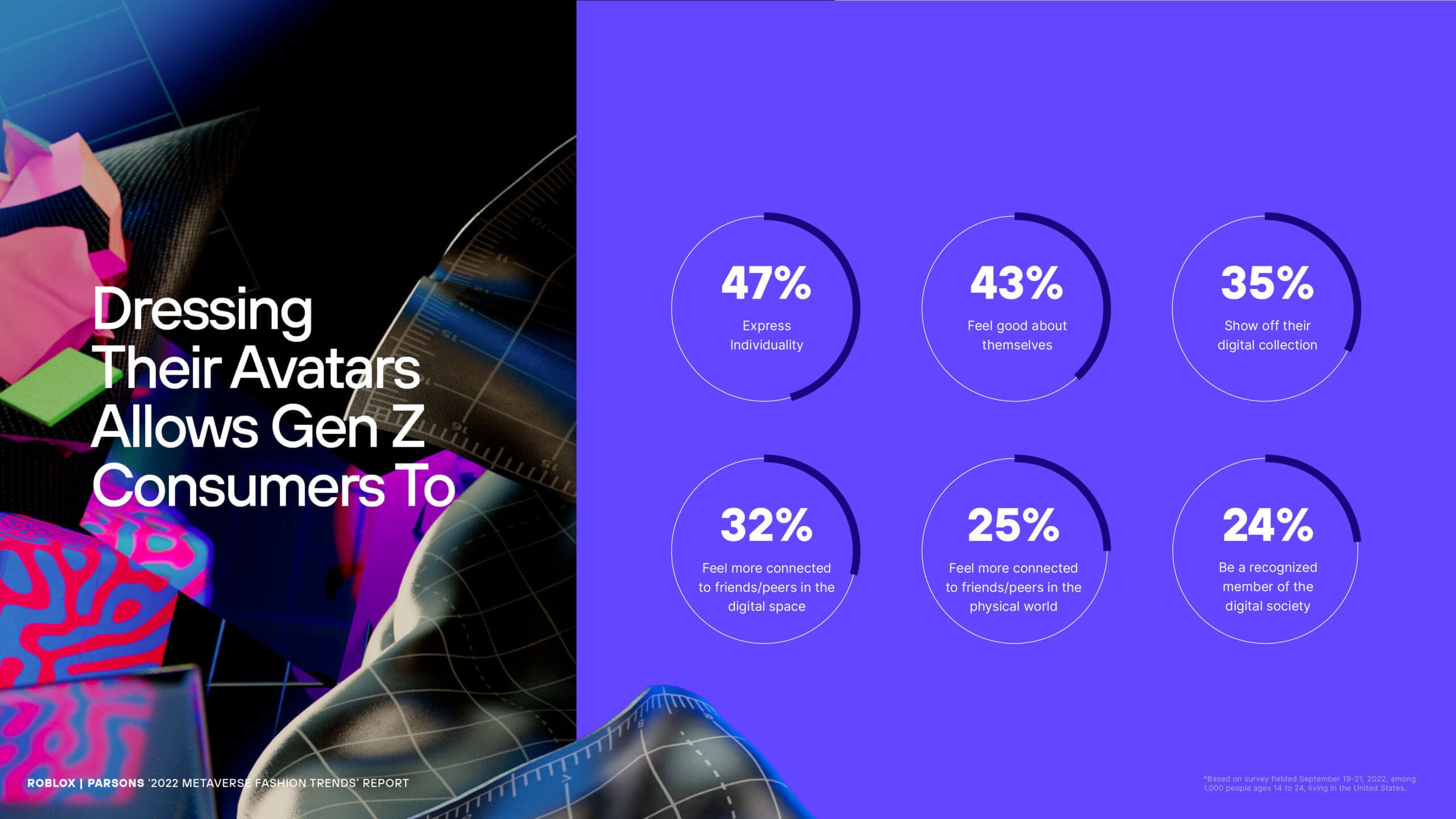
Diverse options for avatar customization are important for the majority of community members who can easily customize on Roblox to be whoever they want to be. In our survey, they’ve noted the importance of having a full range of skin tones (said 70%) and a full range of body sizes (64%), along with a full range of hair colors, textures and styles (70%).
Seven in ten consider inclusivity in digital clothing designs to be “very” or “extremely” important. This challenge can be addressed by new technology like Layered Clothing, a new feature that’s been embraced by both our community creators and users. Over the course of 2022, over 157 million users on Roblox have already acquired both free and paid items community-created Layered Clothing items.
3. Nearly 3 in 4 Gen Z Say They Spend on Digital Fashion
People are expressing themselves through their avatar style and Roblox fashion choices similarly to how they do in the physical world, with over half (53%) saying their style changes based on their mood or feelings on a particular day, and 37% changing clothing based on where they are going in the metaverse and what they are doing. Many (42%) would change their clothing to immediately try on a new purchase.
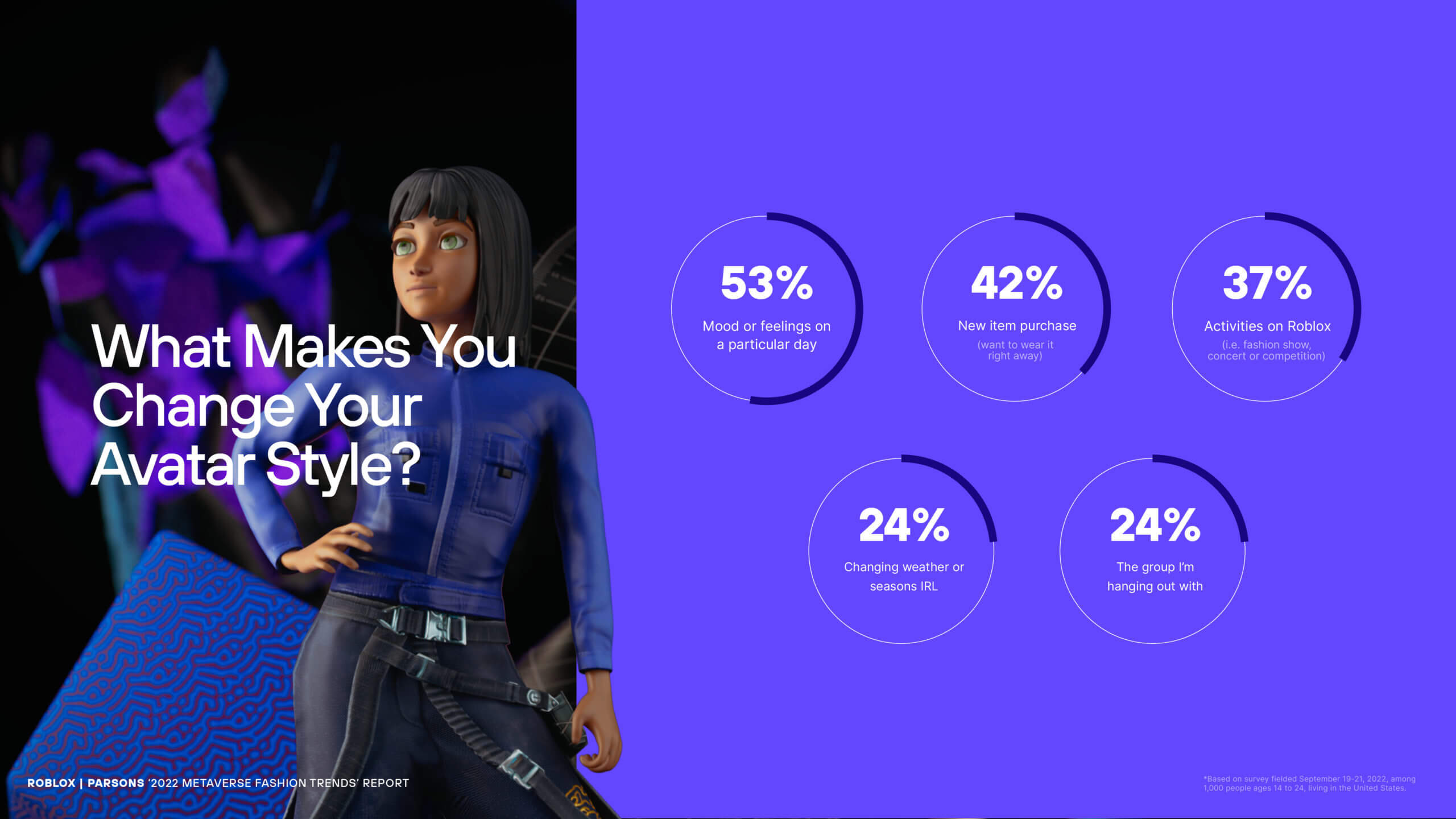
Among those who say they spend money on digital fashion, 31% of users said they’d typically spend up to $5 per month and another 30% said up to $10-$20 per month, while nearly 12% will spend $50-$100 monthly. Over 1 in 4 say they’ve spent anywhere from $20 to over $100 on a single virtual item.
4. IRL Trends Influence Avatar Fashion (and Vice Versa)
In our survey, 70% of Gen Z said their avatars dress at least somewhat like their IRL style, with equally as many (70%) saying they also get physical style inspiration from dressing their avatars.
Take the #Barbiecore trend, which started on social media as part of the excitement for the upcoming “Barbie” movie, or Y2K nostalgia: the Roblox community rushed to reflect these key 2022 fashion trends both in creation of items and their avatar styling.
The timely launch of the Forever 21 x Barbie collection helped ensure shoppers could quickly (and literally) get dolled up for their metaverse adventures, and the Y2K trend has been peaking on Roblox, with total purchases of Y2K-labeled items surpassing 188 million from January to September 2022.
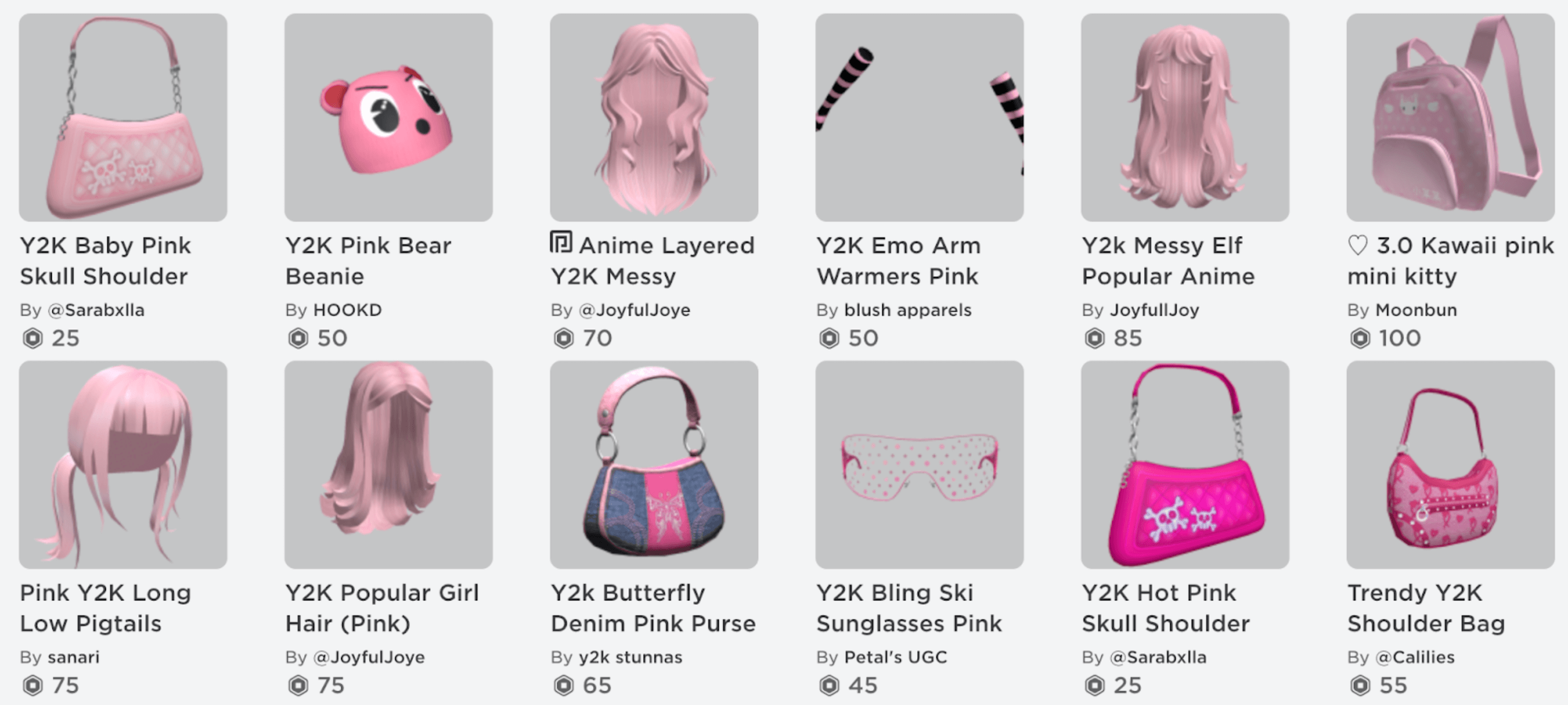
5. The Prestige of Digital Fashion Is On The Rise
Recent industry research points to Gen Z’s “outsized impact on culture and economy,” given that this consumer group accounts for approximately a quarter of the world’s population, and already has a purchasing power of hundreds of billions of dollars in the U.S. alone. With this demographic spending more time in immersive social spaces like Roblox, the prestige and impact of digital fashion are on the rise.
More than half (58%) of respondents consider a digital fashion designer career to be just as impressive or even more impressive than the role of a physical fashion designer. This number grows significantly among people who spend up to $100 per month on avatar fashion, where 54% said being a digital fashion designer is more impressive.
As we look forward to the near future, we expect the next generation of fashion designers and brands to be deeply immersed in digital fashion, dressing avatars, designing 3D digital versions of their collections and creating metaverse-exclusive items.
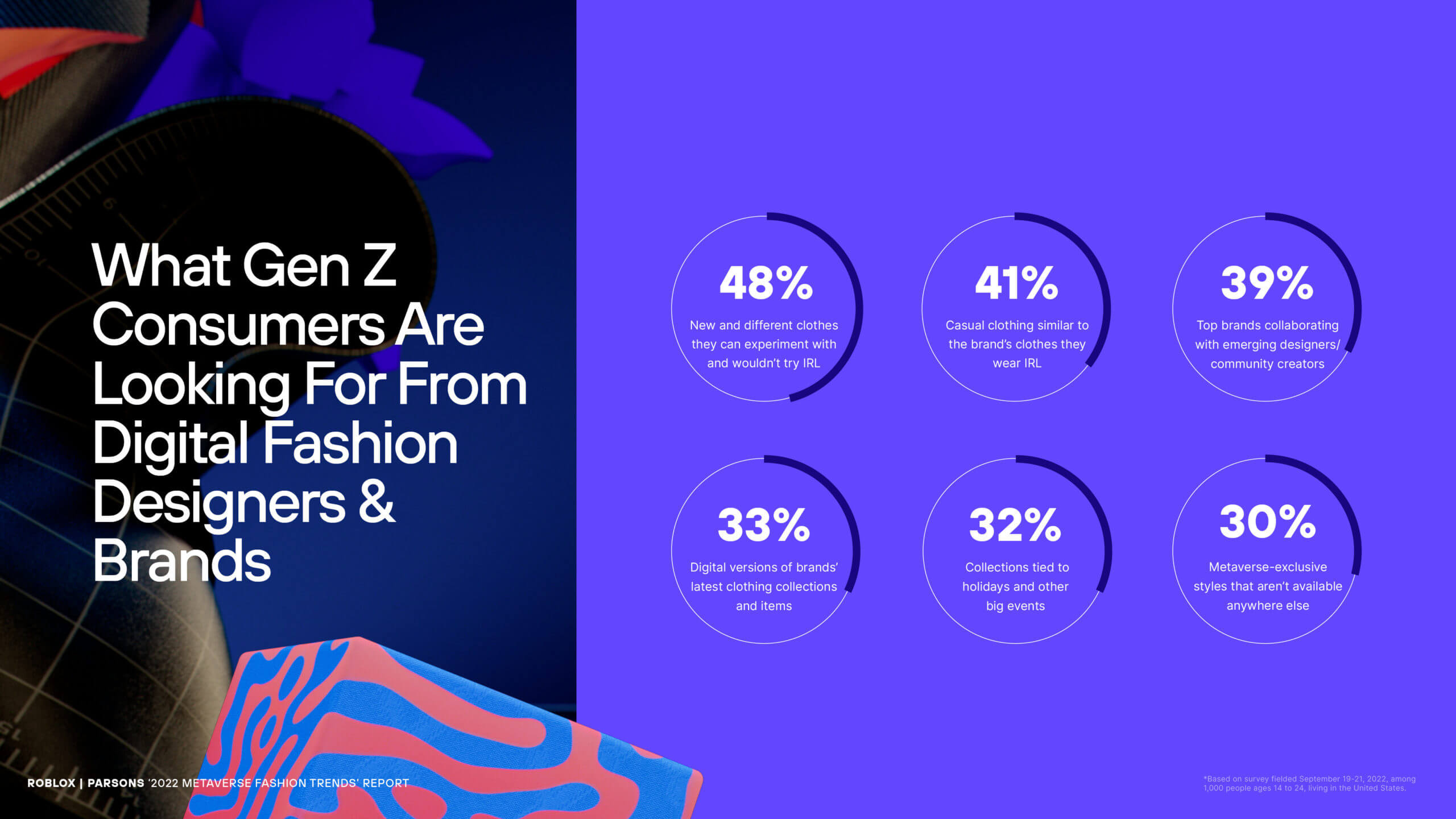
We couldn’t be more excited to collaborate with the thought leaders at Parsons School of Design to see, along with brands, designers, and our Roblox community, how we can further enable self-expression and empower our community to become whoever they want to be – on our platform and beyond.
¹To obtain the most recent consumer insight data, Roblox, in collaboration with the Parsons School of Design, commissioned a poll from Momentive (makers of the SurveyMonkey platform) fielded September 19-21, 2022, among 1,000 people ages 14 to 24, living in the United States. The sample has been balanced for gender using the Census Bureau’s American Community Survey to reflect the demographic composition of the US population in that age range.
The post Insights From Our ‘2022 Metaverse Fashion Trends’ Report appeared first on Roblox Blog.
